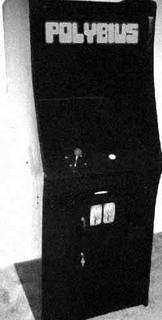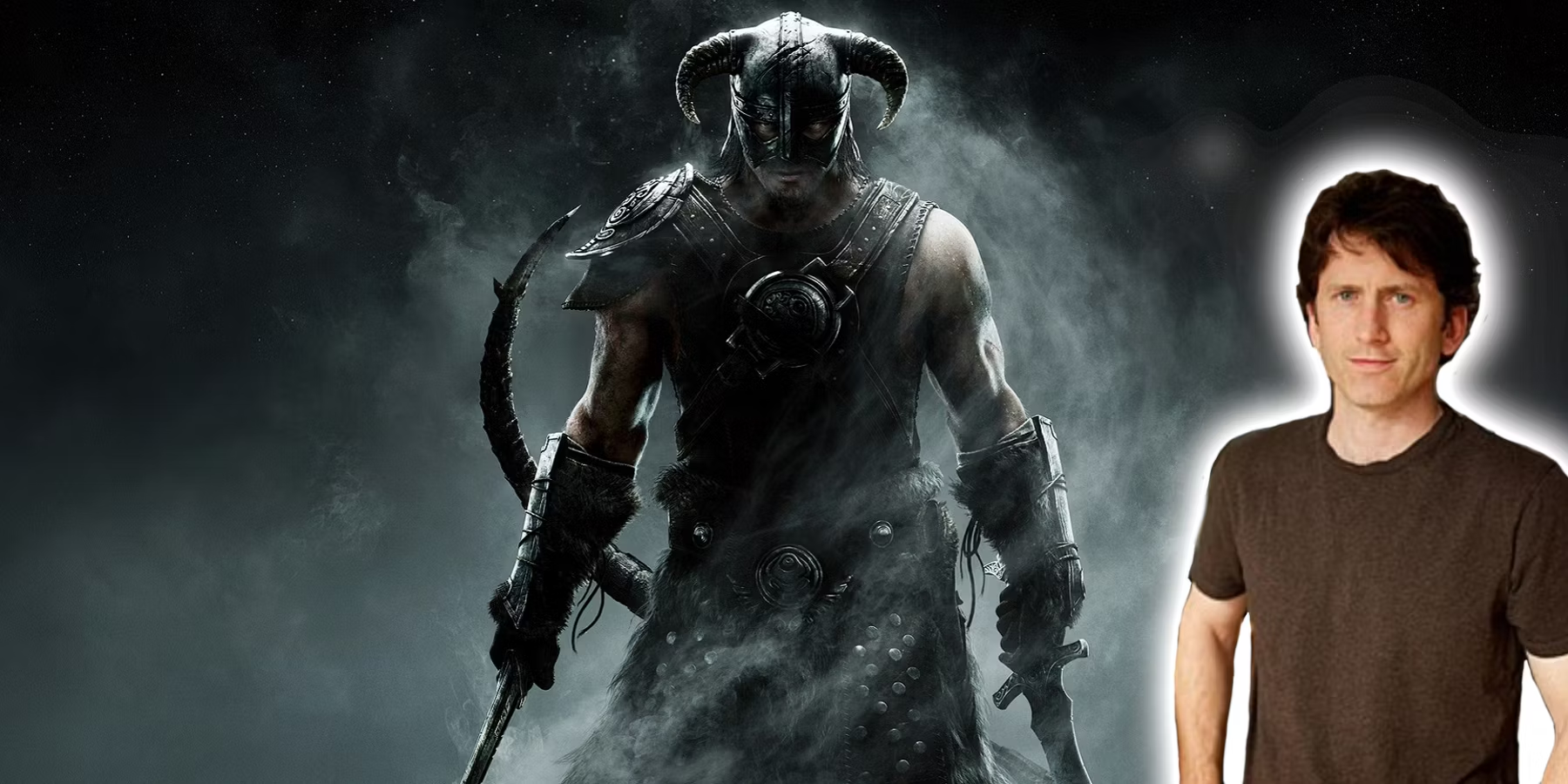Conspiracy theories can emerge seemingly from anywhere. One of the most fascinating things about conspiracy theory is that if a person was to look for one, anywhere, chances are they’ll find one if they want it to be there (or if it’s true of course). In some cases, they can arise almost naturally. It only takes a small idea, a minute suggestion of subterfuge to become a full-blown theory, like a rumour. It does not take long for that small idea to sink in its roots, grow tall and sprout multiple unique branches.
Eventually, many conspiracy theories grow massive, sometimes they become too complex and absurd, perhaps too large to be believable. Sometimes a theory is just big enough to fuel doubt, yet just small enough to be believable and has room to grow, with plenty of unanswered questions and incomplete information. It is these theories that leave room for discussion, additional theories and new ideas that spark the most conversation and debate, they are the most fun. The subject of this article – Polybius – is a classic example of one of them.
Who would’ve thought that a conspiracy theory could emerge from the fun-filled, garishly carpeted, neon-lit arcades of the booming video game decade that was the 1980’s? The Polybius legend is said to have relatively quiet origins to say an Area 51 or Illuminati level conspiracy, beginning in a few arcades in the quiet small American town of Portland, Oregon.
Regardless of whether it exists or not, it’s a very interesting story. The events surrounding the legend is fertile ground for conspiracy. It is no wonder that the mystery of Polybius persists to this day, still, some have yet to hear its story. Despite many claims that Polybius is nothing more than an urban legend, multiple individuals have claimed to have seen the machine and even played it during their youth in the golden era days of the arcade, some have even claimed to own one!
Polybius could be inspired by fairly common tropes of 1980s’ era sci-fi. Man-made electronic devices, perhaps with an eerie glowing screen, hypnotising an observer or the user into some specific act or even killing them, whether it be an arcade machine, a television set, or a microwave. As technology in the 1980s’ swiftly developed, these kinds of sci-fi stories emerged. If it were to emerge in 2019, perhaps Polybius would’ve been a prototype smartphone or an experimental VR headset?
With the lack of records of its existence, death or maddening of its players, its sudden popularity, arcade patrons physically fighting to play it while others queue down the street, mysterious men in black and it’s sudden withdrawal from arcades, the tale of Polybius is certainly curious and fascinating. If anything, Polybius is a great demonstration of how rumour becomes a legend.
Perhaps the machine is real, and as I type these words, one or more of the deadly machines are collecting dust in the corner of some secret government facility somewhere? Let’s look at all the claims, stories and internet-based shenanigans to see if at all there is a hint of authenticity. Is the Polybius legend a product of its time and nothing more than pure fiction? Was Polybius the product of a secret U.S government-funded mind-control experiment that was hastily abandoned? Is my name now on some government watch list because I’m writing this article? Strap yourself in and let’s take a look.

THE MACHINE
Some claim to have played or had at least seen Polybius, so we have some descriptions of the machine. Its gameplay has been described as psychedelic and intense with apparently some puzzle elements, some say that the game became difficult by getting faster, as a result, some players would become almost hypnotised, locked in, rather than just being “in the zone”. Some say the game was reminiscent of Tempest. Tempest was indeed released in 1981, October to be exact, so it is possible that the game people saw was a prototype of Tempest (or just a regular Tempest machine).
Some say that the machine lacked the kind of artwork that you would expect to see adorning the sides and control panel of a standard arcade machine. It was simply a jet black arcade machine, with a basic control panel, a simple screen and the word ‘Polybius’ in bold milky green/blue eerie lettering across its marquee. Amongst the standards such as Asteroids, Pac-man, and Space Invaders, Polybius would’ve stood a strange and ominous monolith. Yet despite its forgettable, unattractive, and simple design, the machine captivated players in the tens. Some of those gamers allegedly left the machine a damaged person.
THE “VICTIMS”
In this golden era of gaming, the games were simple. In-game stories were minimal, the experience of a narrative and its conclusion were often not sought after, or even present in most cases. If they were they were very basic and this was mostly down to technological limitations, also, for the most part, no one cared. Many games were designed to not end, a game that ends is a game that stops quaffing cups of coins after all. In the ’80s arcade, video games were not at all about “completion”, but high scores. It was all about getting your initials atop a high score table and claiming your throne, your local legend status and respect of peers.
This pursuit resulted in many arcade patrons engaging in incredible feats of endurance to gain that legendary status, playing a game for 30 hours straight on a single credit for example, or marathoning 1,000,000 points playing a game where such a score was thought impossible. From these times various high score legends emerged, raising the bar higher and higher, but for many, that bar was too high. For a few, the bar was too high for their health.
Jeff Dailey and Peter Bukowski
Around the time of the purported release of Polybius, a young boy entered an arcade to play a game to which he was extremely addicted. He was not only addicted, but he was also excellent at the game. After entering his name onto the high score list, the boy suddenly collapsed dying of a heart attack caused by the stress of playing the game at such a high level. The young mans’ name was Jeff Dailey, and he was heavily into arcade games, especially the one that caused the stress that ultimately took his life. However, that game was not Polybius, it was the classic Berzerk. Tragically, the very same game would take another life, a boy named Peter Bukowski who unlike Jeff had a myocardial inflammation which caused a gradual degeneration of Peters heart muscles and the killing of his heart muscle cells. Like Jeff, he too was a great Berzerk player making the high score list twice within fifteen minutes. The stress of the game was too much for his damaged heart and he too collapsed and died. 
So it is reasonable to believe that these stories could inspire stories of deaths caused by Polybius, it certainly sparked panic about video games. Now, not only were video games “poisoning youth”, but outright killing them. Interestingly, two incidents occurred in the town that was said to be the testing ground for Polybius – Portland, Oregon. These two incidents involved two young boys, Brian Mauro and Michael Lopez. If you were to track down the November 29th, 1981 edition of the Oregonian newspaper The Eugene Register, it tells the story of 12-year-old Brian Mauro.
Brian Mauro
Brian had set out to break the then Asteroids record of 30,100,100 set by Dennis Hernandez, a record that took 52 hours to accomplish. After 28 hours and multiple cases of hand cramp, Brian (apparently wearing a full tuxedo in front of cameras) fell ill suffering from stomach pains. He believed the pains were brought on by excessive consumption of Cola, he also downed multiple glasses of orange juice, quite the cocktail. He bowed out, but thankfully he did not die. Mauro was bed-ridden for two days, unable to eat with exception of small sips of soup. He finished with a highly respectable 14 million points. This also makes Mauro the youngest person to attempt a live record-breaking such as this.
Michael Lopez
Then there is the story of Michael Lopez. Michael and his friends had visited the Malibu Grand Prix arcade in Portland (now a used car lot) and began a session playing the arcade game, Tempest. The friends gathered around and took turns trying to best each other. During his turn, Michael began suffering a sensation in the back of his head. Michaels vision became blurry, he saw flashing lights and then he stumbled outside of the arcade and vomited in the parking lot. He and his friends decided to call it a day and walked Michael home, he got to about four blocks from his home when he collapsed on a neighbours lawn, rolling and screaming from immense pain in his head. At school the stories spread about Lopez’s collapse and gradually the facts become distorted, mixed and moulded with other anecdotes, as often they do. The incident caused other children to avoid Tempest entirely, claiming that Lopez had been damaged by the game and they did not wish to suffer the same fate. His and other peoples accounts could have easily inspired or contributed to the Polybius legend.
Once again, you can see how these stories can be embellished from a story of endurance pain and repetitive strain to a legend of a video game that kills a player because of it hypnotising them into playing for many hours straight. A story about a video game that grasps a player in its electronic claw and only let’s go when they die! The fact is, truth is rarely appealing, plus no legitimate records of any deaths can be found that mention a gamer dying at the joystick of a game called Polybius.
THE MEN IN BLACK
In conspiracy theory circles, the Men in Black are a commonly discussed topic. Nearly every conspiracy theory has some connected theory involving strange men and women in crisp dark suits. Some are seen as nothing more than straight-laced sometimes menacing government officials, yet some are creepy humanoids, rough simulacrums of human men, sometimes tall with gaunt faces, with inhumanly long limbs, strangely red lips, bald heads, waxy pale skin, broken speech patterns and awkward unnatural movement. These types of MiB are often believed to be alien beings disguised as men or women for infiltration, or, to easily and secretly visit with government leaders.
Whether they are no-nonsense G-men or alien interlopers from another world who can’t quite human, it was said that on several occasions, often in pairs, men in black suits would appear at the aforementioned Portland arcade. Without pause, these MiB would march straight to the Polybius machine, and from it, they would extract data. Some say these Men in Black would gather data by utilising a kind of portable device, or simply accessing the internals of the machines and emerging with handfuls of printed data or some sort of device, or even removing a machine entirely and loading it into the back of a truck.
Then, they would disappear, as swiftly as they arrived, without speaking to or even looking at patrons or arcade staff. Several weeks or even days later they would return and repeat the process of gathering something, leaving the premises without saying a word and then swiftly jumping into a black car or van. The MiB allegedly extracted data that pertained to player responses. Some have also claimed that these data gatherers are not MiB at all, men with no links to the U.S government, but simply mysterious staff coming straight from the offices of the developers of the machine, a company said to be named “Sinneslöschen ”.
There is one particularly credible reason for these Men in Black sightings, agents of the U.S Federal Bureau of Investigation were indeed scoping out and entering arcades all over the United States, and for reasons that had nothing to do with a mysterious black arcade cabinet. You might be thinking why on earth would the FBI need to extract anything from or even need to open up an arcade cabinet, let alone spy on and investigate arcades? Well, it’s quite simple – Illegal Gambling.
Illegal Gambling Crackdowns of the 1980s
It is said that on many occasions agents would extract some sort of device from a machine rumoured to be Polybius. These sightings do have some truth to them, FBI agents would indeed remove unknown parts. But these MiB were removing apparatus linked to counters that were used in illegal gambling.
In the Portland area, government agents stormed several bars and arcades following a year of surveillance. One arcade operator later admitted to rigging machines for gambling. This particular operator wired his machines to counters that tracked a players accumulation of games played. The criteria for winning isn’t all that clear, but perhaps the operator would payout money to the player with the most cumulative points over a set period, or even total games played.
Further raids occurred in an arcade in West Seattle, Washington. This involved more of a sting operation as agents rigged popular machines with cameras and microphones believing that suspected criminals would likely divulge incriminating information while they played games with their friends. The agents had purchased games from one arcade operator and set them up in another, one such arcade was in Seattle. Tempest was a game often used, as well as Scramble and Galaxian. The reason these games were selected was not their popularity, that was certainly a consideration, but it was simply because these machines had smoky glass bezels effective for hiding cameras and audio recording equipment.
This operation caused a shortage of Tempest in the Portland area, this could explain the stories of players queueing to play Polybius when in actuality they were waiting to play Tempest. It was, after all, quite the groundbreaker. This further explains sightings of government agents removing machines and the fuelling of the rumours that these agents had removed a “dangerous machine” from arcades. The presence of “MiB” could even be explained by the general belief of mothers and the law that the arcade was a cesspit of degeneracy, delinquency, and drugs and so random inspections by agents were not uncommon.
There were two separate instances of government agents seizing an arcade machine, the sole purpose of this was to document the initials of those that made it onto the high score table. They did so to obtain the possible names of eyewitnesses that could be useful in investigations. There is even truth behind government tests involving arcade games. This was, however, nothing nefarious. This was a time in which it was believed that video games were dangerously addictive to minors, and so there was a consideration of the United States Supreme Court to impose an age restriction of 17 years and above for players or patrons of arcades and their games. The test proved that there were no grounds for such a restriction.
MK-ULTRA
Polybius has been linked to the well-known mind control experimental project MKUltra. MKUltra was first sanctioned by the U.S Central Intelligence Agency in 1953. Gradually, presumably due to a lack of scientifically significant results it was reduced in size over its 20-year lifespan. Its purpose was to develop mind control techniques that could be useful in interrogations and the manipulation of the human mind. Many experiments involved willing human subjects, some procedures utilised and tested different techniques while some involved experimental and potentially dangerous drugs. However, some subjects were citizens of the United States and Canada that were completely unaware. Also, relatively new information surfaced in 2018 that detailed some experiments that involved direct electronic mind control of animals via brain implants.
MKUltra was particularly notorious because some of its experiments were deemed outright illegal, involving horrific practices, some of which include extreme isolation and sensory deprivation, physical torture, verbal abuse and even sexual abuse. Not to mention that when the project was first brought to the attention of citizens, all of its related documentation was ordered to be destroyed (though some documents survived). On top of this was the testimony of MKUltra participants, so everyone knew about MKUltra and its twisted experiments by 1975. For a couple of years, still, the consensus was that MKUltra is nothing but another dark and twisted conspiracy theory. Then surfaced declassified MKUltra documents, confirming the projects existence and eventual cessation when a freedom of information request unearthed over 20,000 MKUltra related documents in 1977.
So, was Polybius another experiment in mind control that was an arm of MKUltra? One that tested concepts of mind control techniques that utilised the medium of video games and video game graphics? It’s worth noting here that no MKUltra documents that were uncovered mentioned any kind of gaming technology. After all the project came to an end 8 years before the apparent release of Polybius in 1981 and around the time of the very first home video game console, the Magnavox Odyssey. This could suggest two possible outcomes, either the MKUltra project continued well beyond 1973 and began utilising newly emerging technology as it developed. Or, the idea of sinister mind-control experimentation permeated society and remained forever which led to the complete invention of many imitation conspiracy theories. One of those theories involved an evil black arcade machine, called Polybius.
FEBRUARY 6TH, 2000
On February 6th in the year 2000, a mysterious entry was made to an arcade video game resource website called CoinOp.org. It is here that the arcade game Polybius was first mentioned, the entry described Polybius as “weird-looking, kind of abstract, fast action with some puzzle elements”. It confirmed the copyright date of 1981, yet the copyright records of Polybius cannot be found. The entry also provided some further information. The person who added the entry to Coinop.org claimed to own a ROM image of the game and from it extracted basic information.
The article also came with an attached image, which is arguably the only potentially legitimate image of the game, it featured a screenshot of the Polybius start screen. The screen image, which admittedly could be easily put together in Paintbrush, featured the ghostly logo of the game and possibly the only lead to the origin of the game, a line of information that read “©1981 SINNESLÖSCHEN INC.”
WHAT WAS SINNESLÖSCHEN?
So let’s look at this lead. Who was Sinneslöschen? But first, what IS Sinneslöschen? If you were to type the German words “Sinnes” and “Löschen” into Google Translate you’d get the following result: “Clear Sense”. It’s innocent enough, however ‘Sinne’ can also be translated as ‘Clear’, not as a synonym of lucid, crystalline, or unobstructed, but as deleted, extinguished or wiped. This led many to speculate that Sinneslöschen loosely means ‘brainwash’, ‘sense deletion’ or ‘sensory deprivation’.
While Sinneslöschen can be translated in multiple ways, it is a word that, from the perspective of a native German speaker, doesn’t make sense, to a native it would sound like ‘sense away removed’ which makes not a lick of sense and sounds a lot like something made up by a non-native. Additionally, why would a company call themselves such a sinister-sounding name?
Secrets and Lies
In 2003, the owner of Coin Op.org, Kurt Koller, contacted the video game magazine GamePro to report the story of the mysterious arcade game. Polybius then made its first known appearance in print, appearing in the September 2003 issue of GamePro magazine, in a segment they called “Secrets and Lies”. Alongside the legendary “Nude Raider” myth, the article spoke of the mysterious legend and declared the Polybius story to be inconclusive.

This article helped thrust the legend into the mainstream, with gamers around the globe discussing the game. Many sceptics of the Polybius legend believe that the game was nothing more than a hoax perpetrated by Kurt Koller, a hoax that was created with the sole intention of driving traffic to the Coinop.org website.
The exposure of the Polybius story led to many people coming forward to claim that they had seen the game or had even played the game, with some mentioning the strange effect the game had on them, claiming to remember Polybius causing ailments such as headaches, sickness and loss of sleep. Then there was one who claimed to be one of Polybius’s original programmers, this man was Steven Roach.
WHO IS STEVEN ROACH?
In 2006, a comment was made on the page of the Polybius entry at Coinop.org by a person named Steven Roach. In what is a wall of text, spelling errors and run-on sentences, Roach discussed Sinneslöschen and Polybius in some detail, mentioning nothing of MKUltra, Men in Black or any government involvement. Though he does provide some interesting details that could explain the origin of such theories. Here is a breakdown of what was said:
In the opening, Roach said the following:
“I think it’s about time I laid this to rest, however entertaining the speculation. My name is Steven Roach who is primarily based in the Czech Republic. Sinneschlossen (sic) was a company set up by myself and several other mainly amateur programmers in 1978 that worked on component parts for Printed Circuit Boards that saw programming as a limited but very profitable sideline. I think the fact that it wasn’t the focal point of our business took the pressure off of us and hence we created some quality work which quickly gained a reputation within the industry.
He then goes on to mention the origins of Polybius and the involvement of an unnamed second company:
“We were approached around 1980 by a Southern American company that shall remain nameless for legal purposes to develop an idea they had for producing an Arcade Game with a puzzle element that centred around a new approach to Video Game Graphics. They were very keen indeed to gain an upper hand in what was already a very competitive market so we were offered a staggering commission-based renumeration (sic) package to develop something special that utilised the technology. We developed the game in little more than two portacabins that were knocked together where we spent many stressful mornings, evenings & nights which was a great pity because it compromised our relaxed and innocently amateurish approach to our business in spite of the financial possibilities.”
Then he mentions the name of one of his co-programmers and from where the name Polybius came:
“Marek Vachousek was the programmer who came up with the name Polybius – he had studied Greek Mythology at Masaryk University and came up with the name because it sounded quite bold and mysterious, which is what we wanted quite simply. The inspiried (sic) graphics combined with the puzzle elements and scintilating (sic) gameplay was something to behold – we playtested it for hours and hours and it certainly was an addictive game that was well-loved professionally and recreationally by all that played it. The company couldn’t have been happier and we all thought we were on the verge of something very special indeed.”
Everything was progressing fine, but then Roach goes on to mention concerns that were brought forth about the games potential impact on the player:
“We then received a phone call stating that there were concerns within the company that the basic graphics which featured prominently in so many other games of the time were fine for the average gamer to spend hours at a time without any noticable (sic) physical or mental detriments but the intense and engrossing gameplay of this new step was very much an unknown quantity so the game was put back several months due to divided opinion within their board of directors, much to our consternation for breaking our backs to finish it on time.”
Roach then mentions a horrible incident involving a young boy who played the game:
“We received heartening collated playtesting figures and were then told that the game would receive a temporary limited release which bouyed (sic) us significantly but shortly after, we received terrible news – a thirteen-year-old boy from the Lloyd District of Portland, Oregon had suffered an Epileptic Fit while playing the game, only six days after the machines had literally been installed. One of the senior employees that I knew very well contacted me to tell me that it caused immense ripples of panic throughout the company who were of the opinion that they had “created a monster” as such. It may sound laughable now but please bear in mind that this was 25 years ago when the Video Game Industry was in its infancy.”
He then details the games sudden recall from arcades, the potential number of machines that were distributed and provides a possible explanation for the claimed involvement of mysterious men in black:
“Every effort was made to withdraw the game from the public domain as quickly as possible but the scaremongering was already out in force and a lot of the children were queueing up or daring their friends to play this supposedly nightmarish game. Company Directors descended on the town to assess the situation which may account for these reports of “Strange Men in Black Suits hanging around” and the machines were often taken in daylight, causing minor but noticable (sic) incidents.
“As far as I was made aware, only seven machines were distributed around the area and no other health-related incidents were reported. I heard “off the record” that the company made a one-off settlement to the boy’s family and no more was heard, apart from all the internet-based speculation and resulting paranoia.”
Finally, he ends with the shutting down of Sinneslöschen:
“We disbanded Sinnesscholssen (sic) shortly afterwards because we didn’t want to restrict ourselves to the stringent deadlines of other companies and favoured distancing ourselves from the game in case of any lingering recriminations which could have done a great deal of damage to our personal and professional reputations which was our livelihood and with some of us having very young families, this was extremely important to us.
“As far as I’m aware, no ROM’s or otherwise exist unless they remain in the bowels of the company that distributed it. We only received a basic payment in view of the fact that the game was withdrawn without nationwide or international distribution so we grew to loathe it and was often a cursed word whenever we used to meet up and still is today, which is a shame.
“I still believe we created something that should have changed the face of gaming and would have set us apart from the rest of the industry but Arcade Games were often compared to drugs at the time because of their addictiveness and we created something that small-minded bureaucrats perceived to be the Heroin of the Video Game World that’s only crime was to be many years ahead of its time.”
An interesting read (if you can deal with the run-on sentences, grammatical errors and spelling errors) but it doesn’t convince. Firstly, in two different ways, Roach inexplicably misspells the name of his own company. Secondly, if his company existed, it was operating illegally. I scoured multiple trade office websites and found no historical record of Sinneslöschen anywhere. Thirdly, his associate, Marek Vachousek, the programmer who coined the name Polybius, cannot be found. On the alumni search for the Masaryk University, there is no record of Marek Vachousek. Finally, the name “Polybius” too has some suspicious origin. I believe the person who came up with the name “Polybius” did indeed have some interest in or knowledge of Greek history. Polybius was an actual Greek historian, he wrote The Histories, an account of the rise of the Roman Empire and was from the Greek region of … *sigh*… Arcadia.
In an interview with the defunct Bitparade.co.uk (formerly Gamepulse UK), Roach cites the originator of the name Sinneslöschen as an apparent native German speaker and German citizen named Ulrich Koller. Ulrich coincidentally shares his surname with Kurt Koller, the owner of Coinop.org.
FINAL THOUGHTS
Ultimately, while Polybius is a fascinating tale, all signs point to just that, Polybius is a tale and never existed. It seems that the legend is just a confluence of stories, legends, and misconstrued incidents. It is a product of its time. The most significant problem with the story is the inexplicable absence of retrievable information. No records of the machine can be found from its purported 1981 release to the entry at Coinop.org in 2000. There is no record of a company called Sinneslöschen during this time. There is no record of any copyright information. There is no release info or reviews for Polybius.
For the entire first run of the first dedicated video game magazine, Electronic Games (1981 to 1985), not one mention was made of Polybius in any of its pages, no news of this upcoming game, nor any reviews of what was a super popular machine, no information at all. It wouldn’t be until the release of the September 2003 issue of GamePro magazine that Polybius would appear in print. That’s an inexplicable 22-year information void. Steven Roach is most certainly nothing more than an internet hoaxer.
Then there is the sheer coincidence of all claims of seeing or playing Polybius only appearing after the conspiracy theory permeated forums and chat rooms across the internet. The argument that Polybius was some sort of prototype does make some sense, after all, machines were often tested in small arcades here and there, that could explain the lack of reviews or news in print but it still doesn’t explain the lack of info about Sinneslöschen and the machine elsewhere.
After all my research, scouring the internet for images or ROMs, sifting through information and records, exploring archived internet pages and falling down the rabbit hole of various conspiratorial forums, I conclude the following: Polybius never existed, it started as a rumour. It is said that the legend of Polybius first appeared on a Usenet forum back in 1994, but some may be misremembering the strange case of Publius Enigma. Then, Polybius became the subject of one website owners rather clever plan to generate publicity and traffic to their website, which only served to popularise the myth.
While the Polybius legend remains inconclusive, individuals still claim involvement and even ownership of the machine or parts thereof (such as an extracted game board). Yet, after all these claims, not one individual has been able to provide any verifiable evidence, including Steven Roach. At the time of the writing of this article, Polybius would be approximately 38 years old, that’s a long time and not a single shred of verifiable evidence has revealed itself. Some have even issued a freedom of information act request to the U.S Government which generated nothing about the machine, at least as far the U.S government is involved (then again, that’s what they would want you to think). As awesome a story as it is, Polybius is a myth.
So, what do you think? Did Polybius exist? Is perhaps one of the machines still out there? Was it a mind-control experiment and a part of Project MKUltra? Is Steven Roach and Sinneslöschen legitimate? Was it nothing but a publicity stunt? Was it just a problematic prototype of Tempest? Did you perhaps see or play or have any information at all about Polybius? Contact us below, we’d love to talk with you. Regardless, please leave a comment! Finally, thanks for reading and enjoy this marvellous little Polybius cameo in an episode of The Simpsons, note the “Property of US Government” label.














